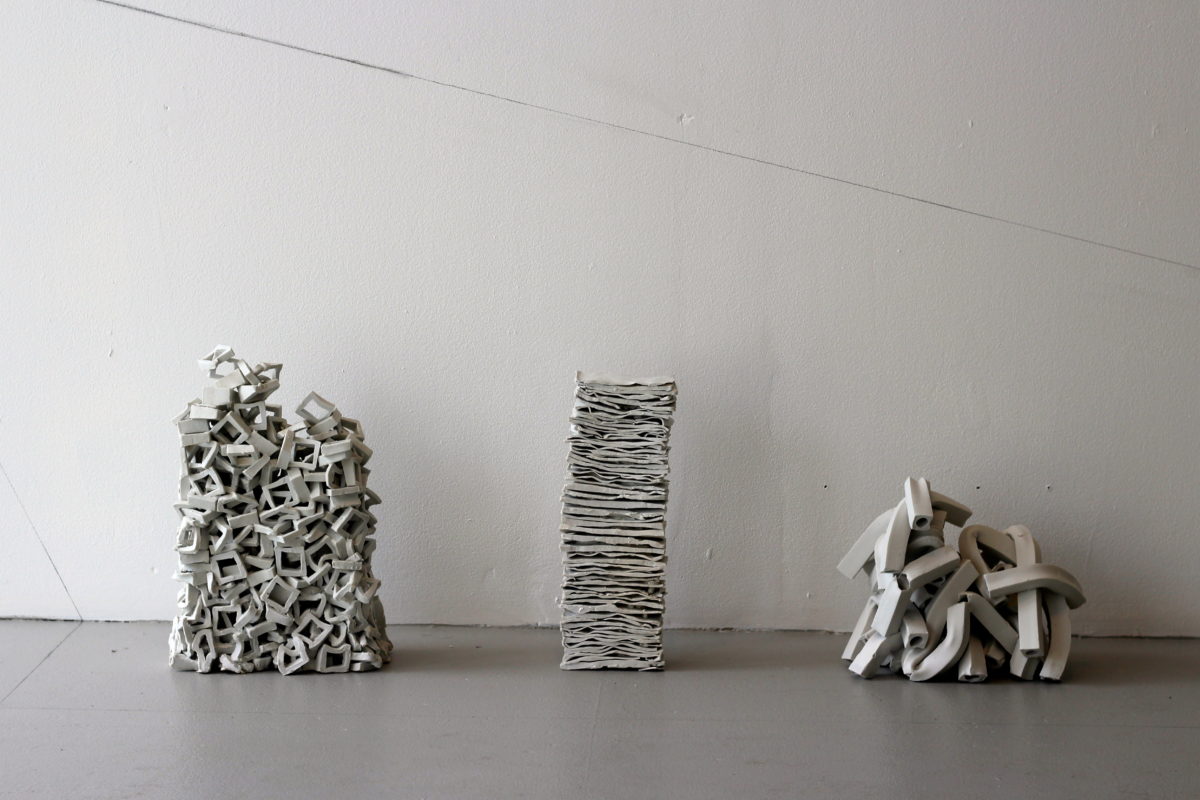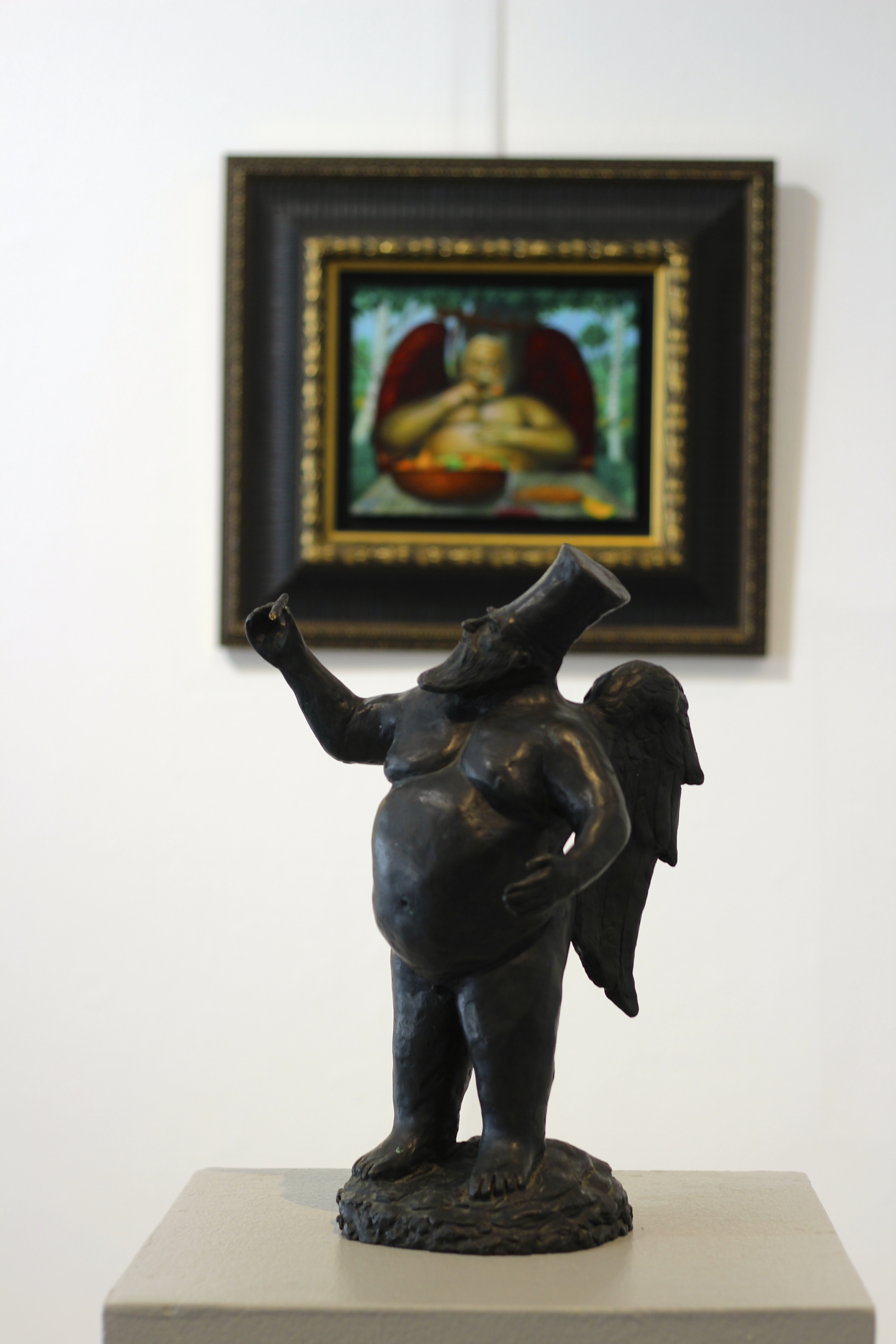
“Real/Ideal: Turning Utopia into Reality” brings a chilling body of contemporary work to the Boston Center for the Arts’ Mills Gallery. Curated by David Guerra, director of A R E A Gallery, the show, which continues through September 17, articulates utopian dreams with underlying feelings of foreboding.
Beverly Sky’s fabric collage on canvas, titled “What You Are Looking For Is What Is Looking,” serves as the exhibit’s flagship image. The piece features two eyes with blue skies reflected in the irises. One is faded while the other is sharp. It generates very strong “1984” Big Brother vibes, especially in the context of a utopia. The Signet Classics edition of that book bears a similar image with a blue eye and white background. The title conveys a bit of the nihilistic philosophy, “When you look into the void, the void looks back at you.”
This uneasy feeling continues throughout the exhibit. On one wall hangs a 14” x 18” painting, “Untitled” by David Addison Small. It features an overweight figure with large wings that eats at a table. He’s naked with silver hair. The wings and rich painterly style give it a classical air, as if this figure is a cross between Bacchus and a winged satyr. In his natural setting at his lushly painted table, the figure isn’t alarming; he can easily be placed in the classical timeline.
 In front of the painting, however, sits a bronze statue, also called “Untitled,” also by Small. This depicts the same heavyset winged figure but with a top hat and cigar. Now he’s a mob boss, a malicious factory owner, a corrupt politician. Now he’s in our world — and that makes him terrifying. He has strutted out from the comfortable realm of fantasy into a space and an identity that we recognize, a threat that we know is real. Small takes the utopian deity of myth and morphs him into the devil we know.
In front of the painting, however, sits a bronze statue, also called “Untitled,” also by Small. This depicts the same heavyset winged figure but with a top hat and cigar. Now he’s a mob boss, a malicious factory owner, a corrupt politician. Now he’s in our world — and that makes him terrifying. He has strutted out from the comfortable realm of fantasy into a space and an identity that we recognize, a threat that we know is real. Small takes the utopian deity of myth and morphs him into the devil we know.
“Entries and Leavings #03” by Greg Lookerse constructs a stained glass window in low relief with paper. The paper is all white, even where the vibrant glass should be. Lookerse strips this iconographic symbol for church and faith down to its architectural bones. Perhaps the piece calls into question the substantiality of church doctrine without all its gauzy trappings. Perhaps it suggests that the utopia of faith should be a pared-down version. Either way, the white windows leave an eerie feeling of loss.
“Real/Ideal” is a perfect example of how utopia differs per definer. The utopia of the church may be different than a cigar puffing Bacchus’s vision. No matter whose world it is, the scariest version is our own reality.
See the full article in The Bay State Banner.